How to Update Router Firmware
This is a necessary chore to keep your home Wi-Fi network secure.

Updating your router’s firmware is essential to address security vulnerabilities, improve performance, and ensure compatibility with newer devices and networking standards. In this guide, we’ll walk you through how to update your router’s firmware to safeguard your network against cyberthreats, enhance stability, and access the latest features provided by the manufacturer.
Our Video on Updating Your Router’s Firmware
If you don’t have time to read the rest of the article, watch our video for a quick rundown and subscribe to our YouTube channel for more helpful watch guides:
Guide to Updating Your Router’s Firmware
- How to Find Your Router’s IP Address
- How to Log in to Your Router
- How to Update Your Router’s Firmware
- How to Update Your Router’s Firmware by Brand Device
- How to Update Firmware on a Comcast Xfinity Router
- Why You Need to Update Your Router’s Firmware
- How Often You Should Update Your Router’s Firmware
Firmware is the software embedded in the router’s hardware that controls its operation and functionality. It handles tasks such as data transmission, network management, and security protocols. Router manufacturers periodically release firmware updates to enhance performance, address security vulnerabilities, and introduce new features or improvements to the router’s capabilities.
How to Find Your Router’s IP Address
Updating your firmware requires logging in to your router after identifying its IP address. In most cases, you can locate the IP address on your router. The router’s IP address usually features a common string of numbers, such as 192.168.0.1 or 192.168.1.1, but this information will depend on your router’s manufacturer and model.
If it’s not displayed there, you can access this information by checking your devices.
Using Command Prompt on Windows
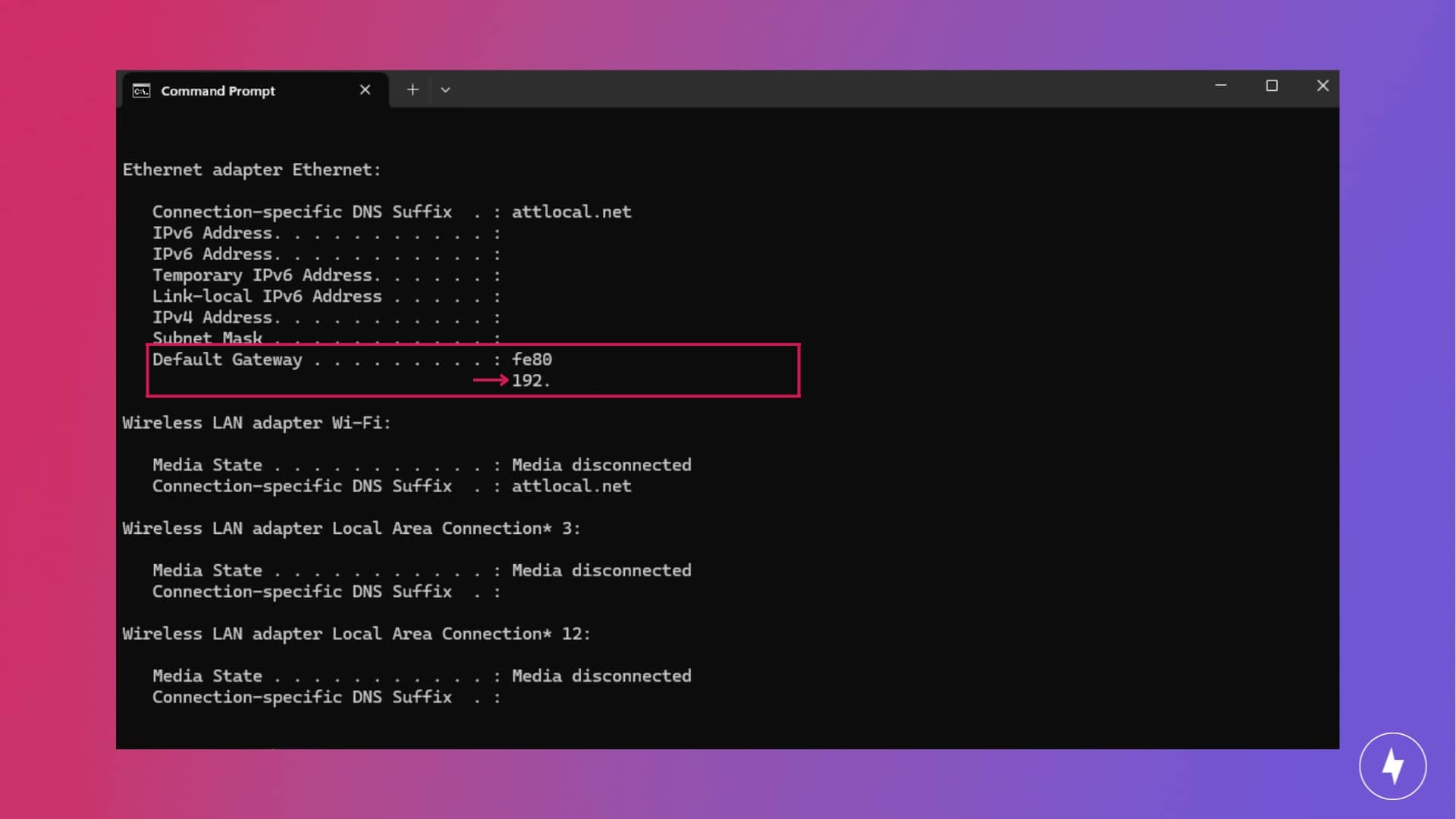
- Search for and Open Command Prompt from the Start menu.
- Type “ipconfig” and press Enter.
- Look for the Default Gateway under the network adapter connected to your Wi-Fi network.
- Locate the number listed next to it, which is your router’s IP address.
Using Terminal on Mac
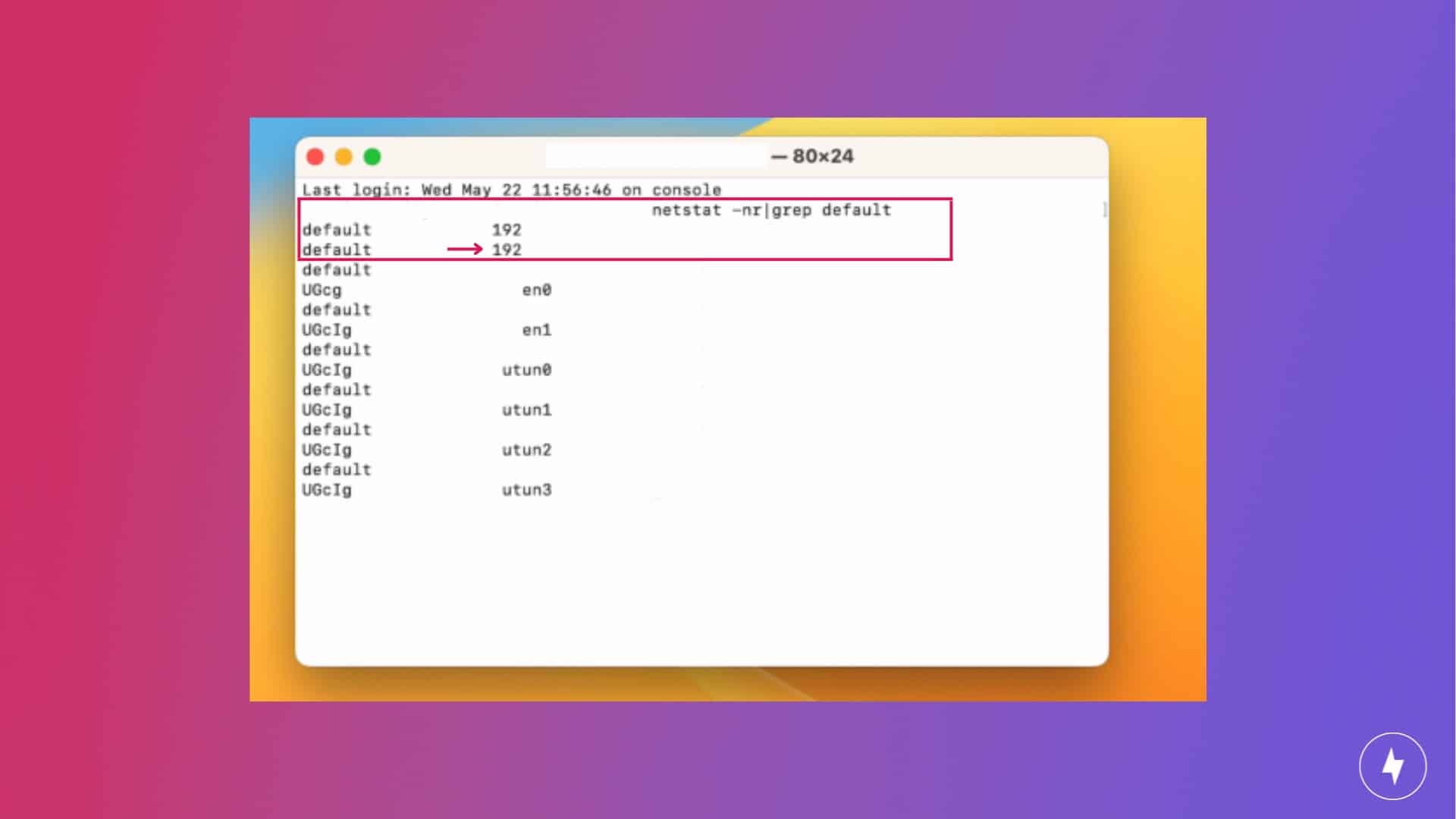
- Launch Terminal from the Applications folder or by searching for it in Spotlight.
- Type “netstat -nr|grep default” in the Terminal window and press Enter.
- Next to Default under the Gateway column is your router’s IP address.
Using a Chrome Operating System
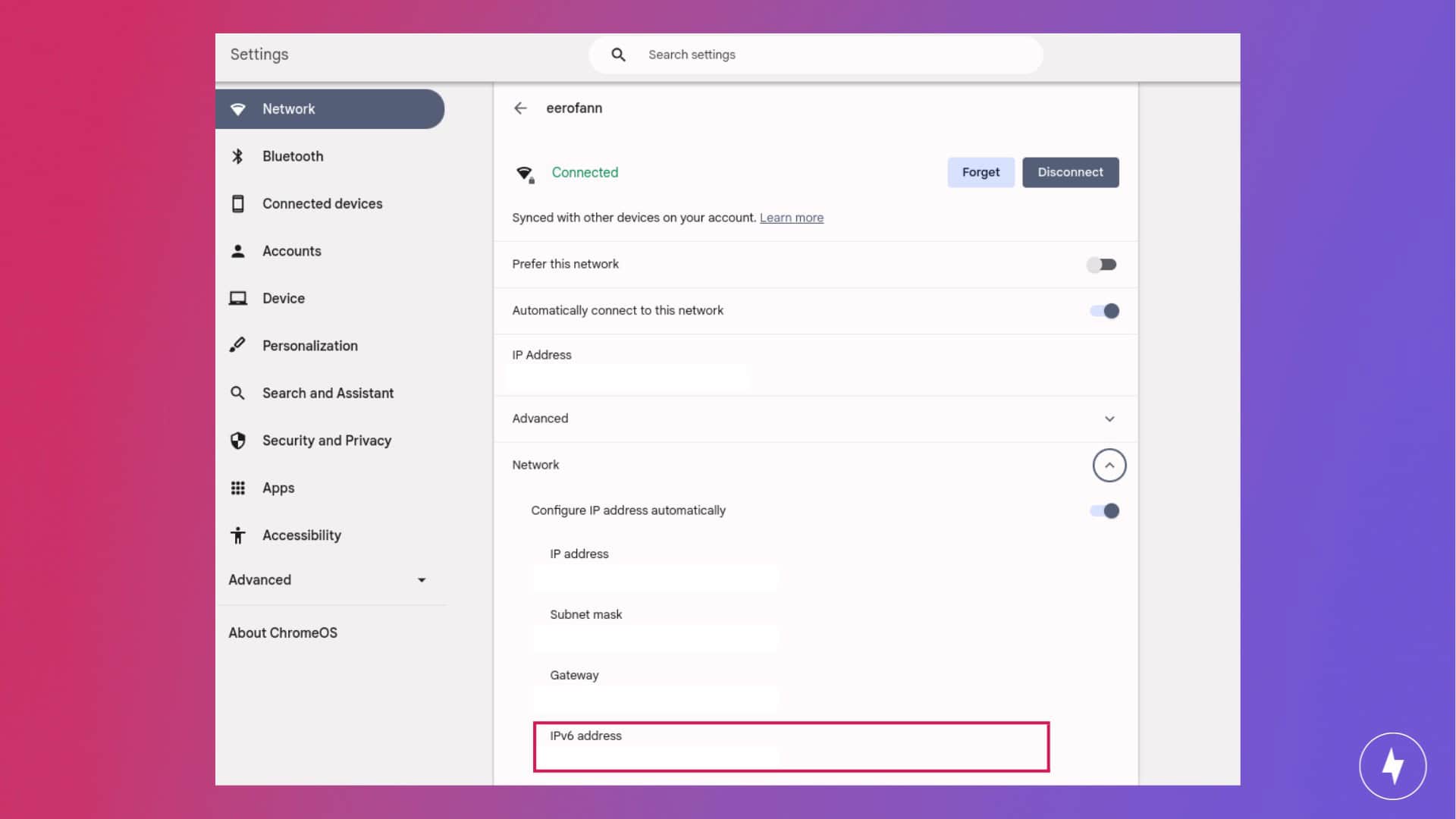
- Click the Wi-Fi icon on the bottom right of your toolbar.
- Select your wireless network once and then again when a new page populates.
- In the window that pops up, select Network.
- Find your router’s IP under Gateway.
Using an Apple Device
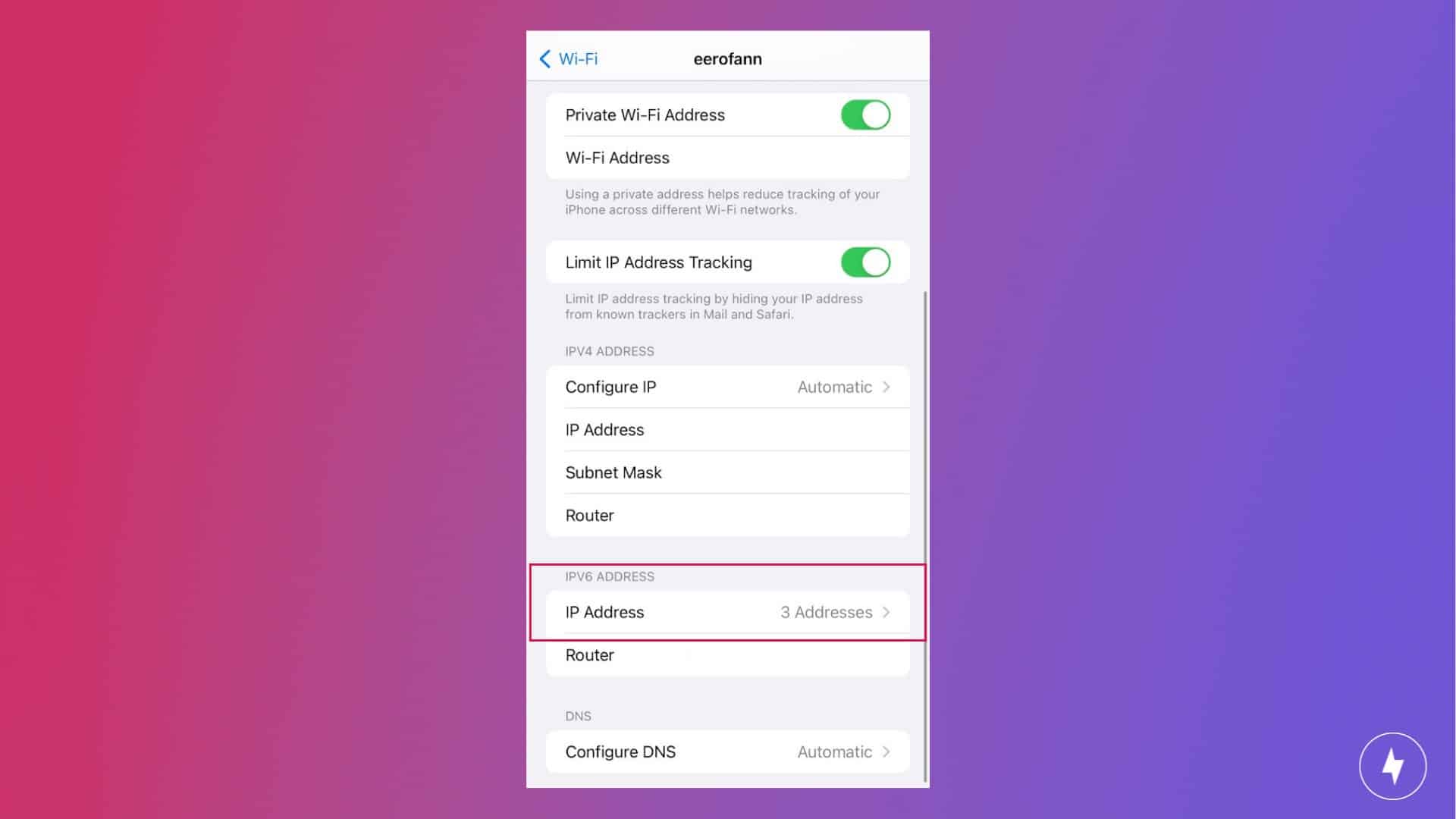
- Navigate to Settings and select Wi-Fi.
- Select your wireless network.
- Locate your router IP address under Router.
Using an Android Device
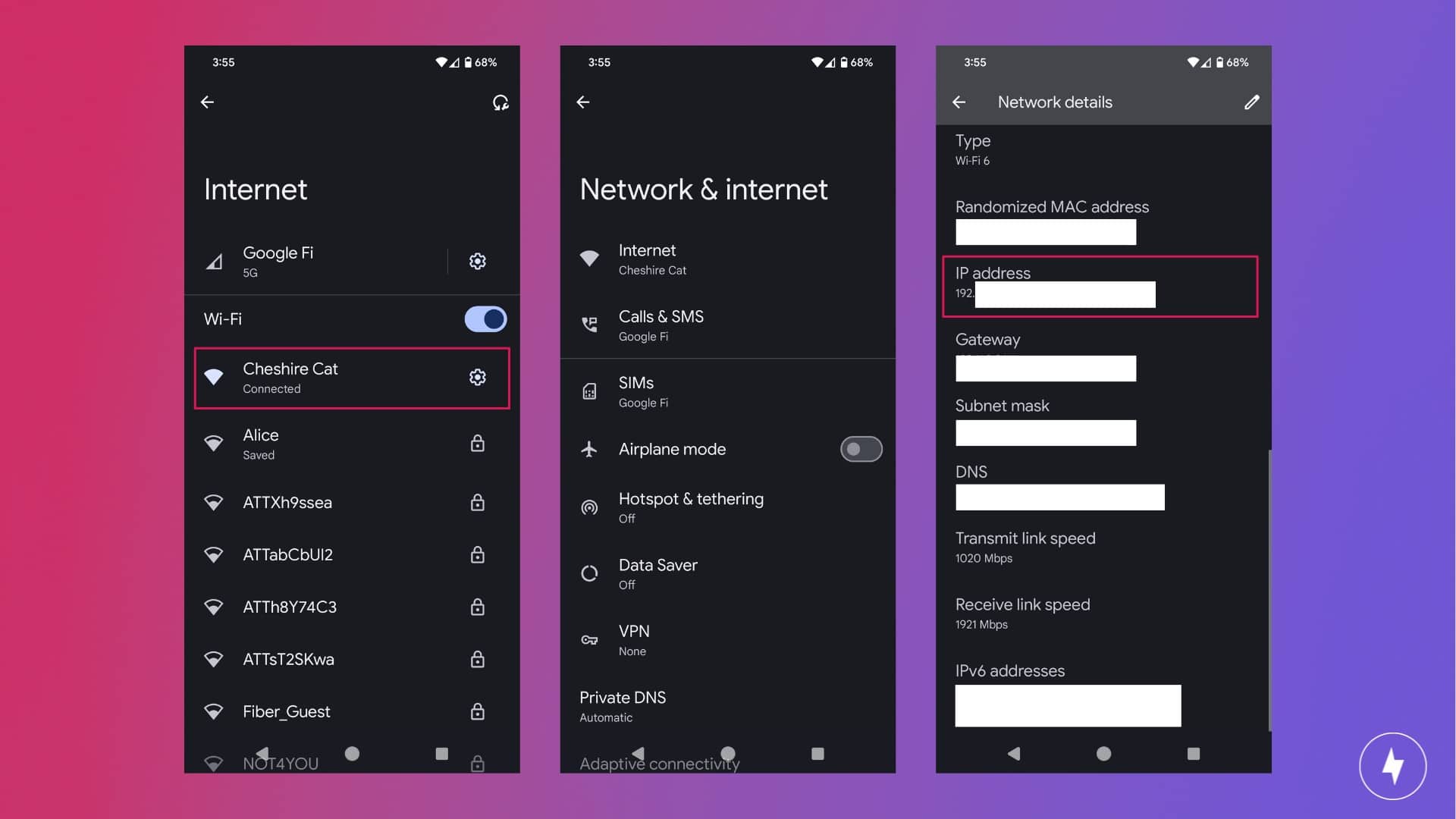
- Navigate to Settings and select Network & internet.
- Tap on Wi-Fi and select your wireless network.
- Tap on the View More drop-down.
- Select Static IP Address.
- Your router’s IP address will be listed above Gateway.
How to Log in to Your Router
To access firmware updates, you’ll need to log in to your router. Follow the steps below to log in.
- Connect to your router: Connect your computer or device to your Wi-Fi router via Wi-Fi or Ethernet cable.
- Open a web browser: Launch any web browser on your device, such as Chrome or Safari.
- Enter your router’s IP address: Enter your router’s IP address into the browser’s address bar.
- Enter your login credentials: Once the login page appears, enter the default username and password provided on the router or in its manual. The information supplied is generic, such as “admin” for both fields.
- Access router settings: After entering the credentials, you’ll be able to access your router’s settings to update firmware.
Network Security: Logging into your router settings is also where you can update your Wi-Fi password. Because these credentials are generic and supplied by your router manufacturer, they’re not as secure. Choosing your own credentials ensures you safeguard against cyberattacks.
How to Update Your Router’s Firmware
The steps for updating your firmware may vary slightly based on your router’s manufacturer and the method of checking your router settings. In general, you’ll follow the steps below to perform the update:
- Navigate to firmware or update section: Log in to your router’s settings and navigate to the firmware or updated section. This section is usually found in the Administration or Management section, but the exact title will vary depending on your manufacturer.
- Check for a firmware update: Your router will either automatically check for an update or you’ll click to manually check for one. Either way, once the check is completed, you’ll see the status of any current updates and if one is available.
- Initiate the firmware update: If an update is available, you’ll have the option to select if you want to complete the firmware update. To initiate, this will usually be an option to Update or Apply. Wait for the update to install and note that your connection will become unavailable while it processes.
- Reboot your router: Once the update has been completed, your router will likely reboot on its own. If not, you can reboot it yourself.
- Verify the update: After the router has rebooted, navigate to the firmware section in your router settings. Verify that the firmware version has been updated to the latest version you downloaded.
How to Update Your Router’s Firmware by Brand Device
The steps to updating your router’s firmware will vary depending on its manufacturer. We’ve gathered the steps for updating firmware on the most popular manufacturers.
How to Update Firmware on a Netgear Router
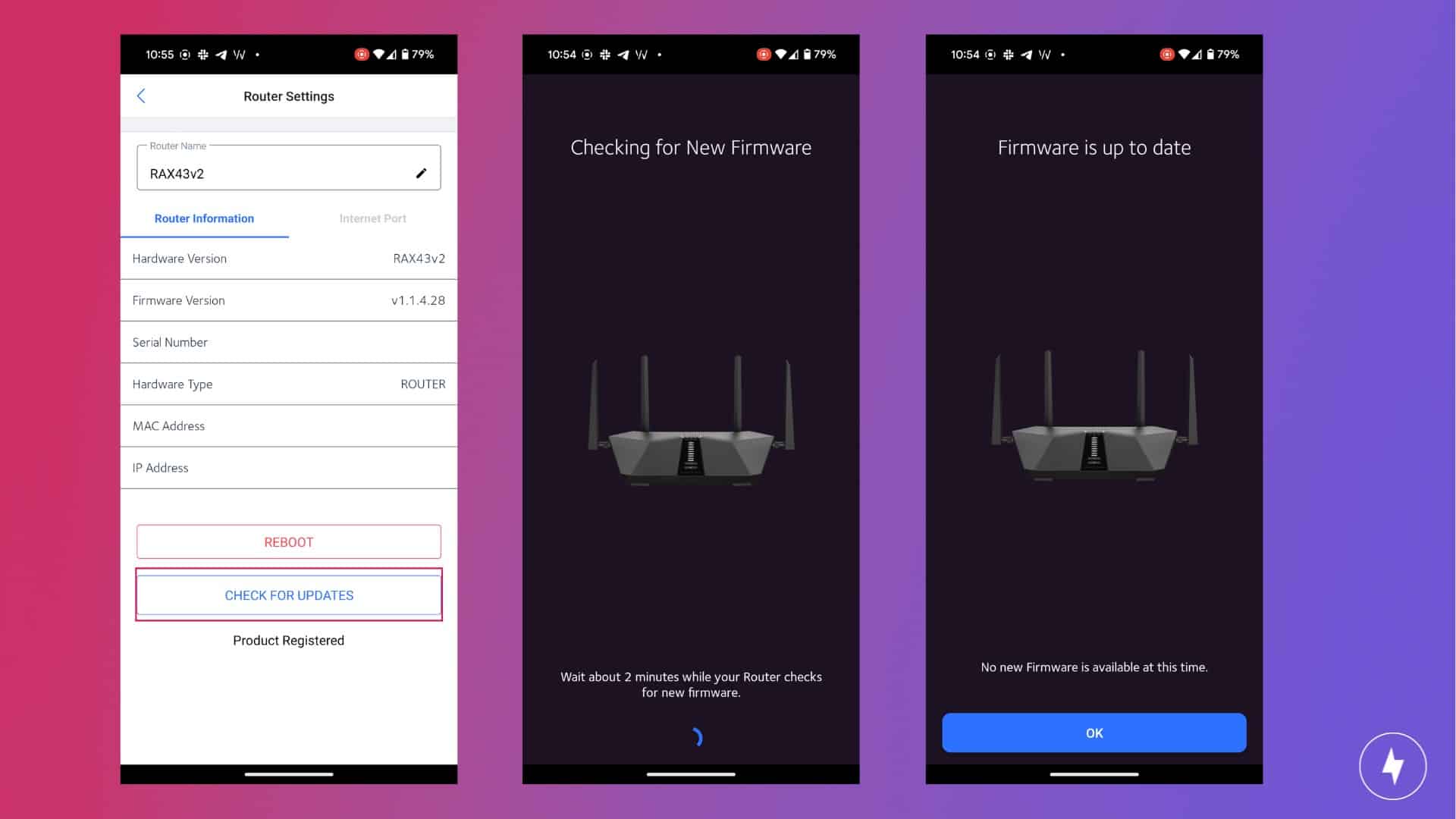
To update firmware on your Netgear router on your computer, follow the below steps.
- Open a web browser and navigate to routerlogin.net or routerlogin.com.
- Enter your router login information.
- Navigate to Settings or Advanced and select Administration.
- Select Firmware or Router Update.
- Click on the Check button.
- Click Yes to install the new firmware.
- Finish the installation by rebooting the router.
You can also update your firmware from Netgear’s Nighthawk app by following the steps below.
- Tap the router image.
- Scroll down and select Check for Updates.
- If new firmware is available, select Update.
- Tap Next to restart the router and complete the installation.
How to Update Firmware on an Asus Router
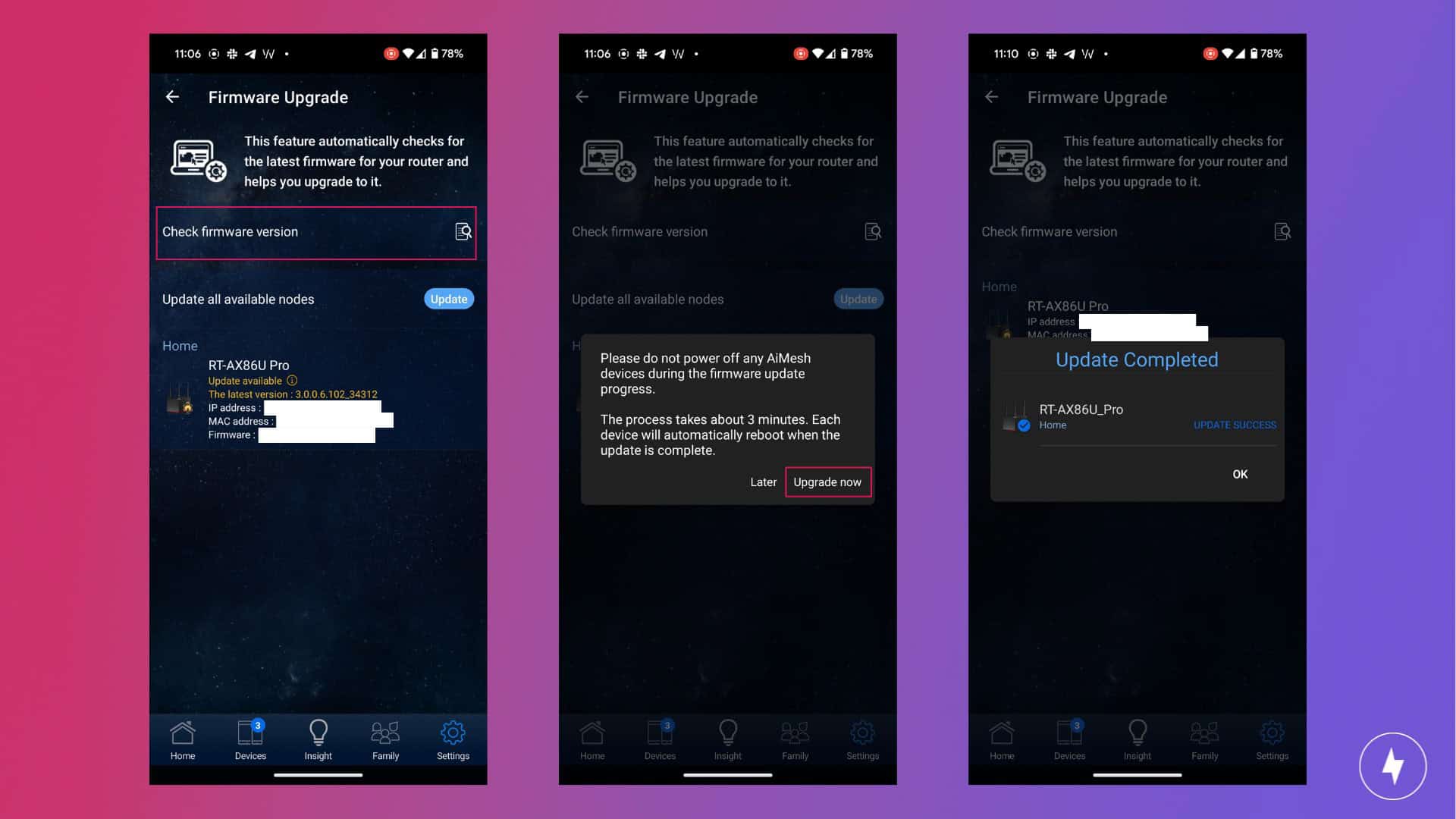
To update the firmware on your Asus router on your computer, use the steps below.
- Open a web browser and navigate to router.asus.com.
- Select Advanced and then choose Administration.
- Click Firmware Upgrade.
- Select Check to see if new firmware is available.
- If it appears, select the Firmware Upgrade button.
- Finish the installation by rebooting the router.
To update your router in the Asus router app, follow the below steps.
- Navigate to the Settings tab and select Firmware Upgrade.
- Click Check Firmware Version.
- If a new upgrade is available, tap Upgrade Now.
- Select OK to finish the upgrade.
How to Update Firmware on a Linksys Router
Update your Linksys router firmware on a computer using the steps below.
- Open a web browser and navigate to myrouter.local.
- Select Connectivity and then choose Basic.
- In the box under Firmware Update, select Check for Updates.
- If an update is available, select the Click Here link.
- An Update Firmware pop-up window will appear. Click Yes to install the new firmware.
- Select OK to restart the router.
- In the Update Firmware pop-up window, select OK to finish.
The Linksys app does not allow you to update your firmware from within the app. However, you can enable automatic updates through the app by following the below steps.
- Select the Menu and choose Network Administration.
- Click on the toggle next to Automatic Firmware Update.
- Select Enable.
How to Update Firmware on an Eero Router
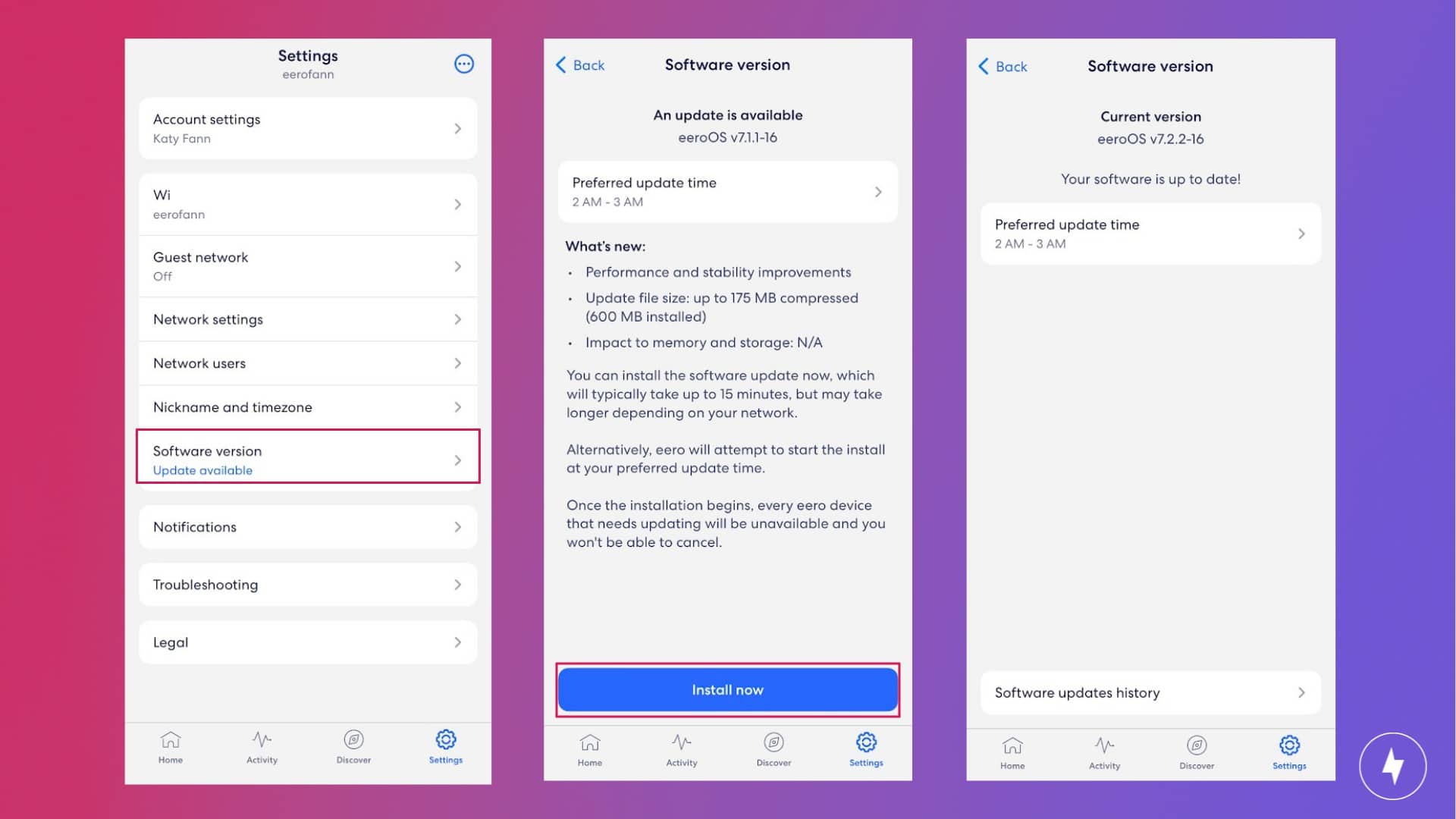
Eero mesh systems do not have a web interface for updating firmware. Instead, you can use Eero’s mobile app to enable updates using the below steps.
- Navigate to Settings and select Software Version.
- Select Install Now.
- Wait for the firmware to install.
How to Update Firmware on a Comcast Xfinity Router
If you’re using a router provided by Comcast Xfinity, follow the steps below to manually check if it needs an update. Keep in mind that updates are typically automatic.
- Log in to your router’s admin page.
- Navigate to Maintenance.
- Click Router Upgrade.
- Select Check.
Why You Need to Update Your Router’s Firmware
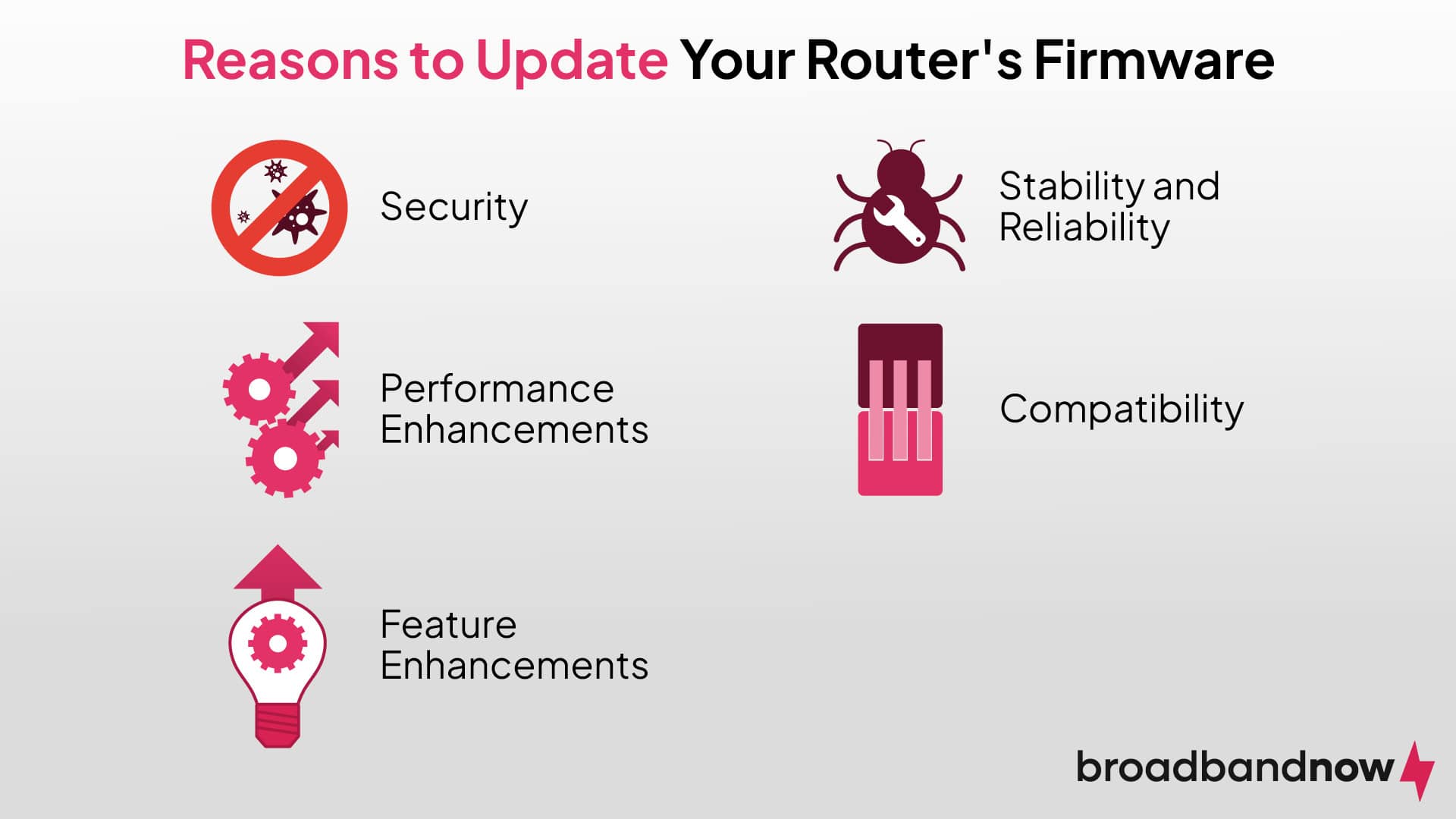
Keeping your router’s firmware updated is crucial for maintaining optimal performance and ensuring your network is secure. Here’s why it’s important:
- Security: Regular firmware updates often include patches for known vulnerabilities and security exploits. This helps secure your home network against cyberthreats, such as malware, viruses, and unauthorized access.
- Stability and reliability: Firmware updates can fix bugs and address compatibility issues that may cause network disruptions or slowdowns.
- Performance enhancements: Updated firmware may also include performance enhancements, such as improved Wi-Fi speed, better signal coverage, and enhanced network management features.
- Compatibility: New firmware updates often support the latest networking standards and technologies, ensuring compatibility with newer devices and optimizing overall network performance.
- Feature enhancements: Manufacturers may introduce new features or functionalities through firmware updates, providing added value and improving the user experience.
How Often You Should Update Your Router’s Firmware
The frequency of updating router firmware depends on the manufacturer’s release cycle, the router’s age, and the presence of critical security vulnerabilities or performance issues. Generally, it’s recommended to check for firmware updates every few months. Some manufacturers provide automatic firmware updates, which can simplify the process by automatically installing the latest updates without manually doing so.
However, if automatic updates are not available, proactively monitor for firmware updates by visiting the manufacturer’s website or using the router’s management interface. It’s crucial to prioritize updating firmware whenever security vulnerabilities are discovered, as timely updates can help protect your network from potential cyberthreats.
Frequently Asked Questions About Router Firmware
What will happen if I update my router firmware?
Updating your router firmware typically improves security, enhances performance, and adds features. The update may include patches for known vulnerabilities, strengthening your network’s defenses against cyberthreats. Firmware updates also often address bugs and stability issues, leading to a more reliable network connection and smoother operation.
Does resetting my router reset firmware?
Resetting your router doesn’t reset the firmware itself. Instead, it restores the router’s settings to their default configuration, including network settings, passwords, and administrative credentials. Firmware is the underlying software that controls the router’s operation and remains intact after a reset.
How long does a firmware update take on a router?
Router firmware updates take anywhere from a few minutes to around 15 minutes to complete. The duration depends on the update size, the router’s processing power, and the internet connection speed. During the update, the router may reboot one or more times, temporarily interrupting internet connectivity. Allow the update to finish without interruption and avoid powering off the router during the update process to prevent potential issues or data corruption. After the update is complete, the router should automatically reboot and resume normal operation with the newly installed firmware.
What to do if your Comcast Xfinity router firmware won’t update?
If your Comcast Xfinity router firmware won’t update, start by rebooting the router and checking for any service outages in your area through the Xfinity app or website. If the update is stuck or not going through, contact Xfinity Support and request a refresh or push of the latest firmware. In some cases, replacing older equipment may be necessary to receive new updates and maintain security.
Does Comcast Xfinity automatically update router firmware?
Comcast Xfinity automatically updates the firmware on its leased routers and gateways. These updates ensure your device has the latest features, performance enhancements and security patches. If you’re using your own third-party router, you’ll need to check directly with the manufacturer for firmware updates.